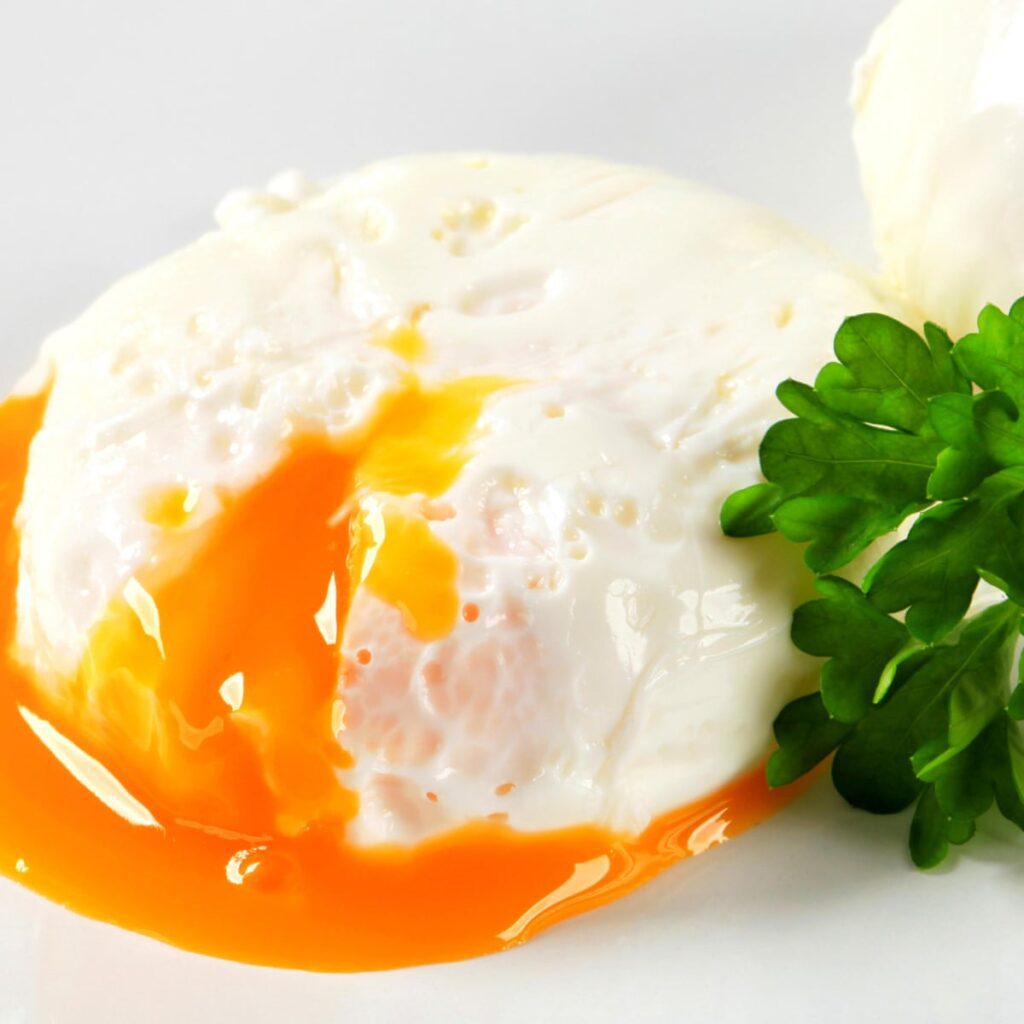This article discusses the art of poaching eggs and provides tips for beginners. It explains the importance of using fresh eggs, cracking and straining them properly, and maintaining the right water temperature. The article also suggests adding vinegar or salt to the water, creating a whirlpool effect, and gently placing the eggs for a more uniform shape. It provides different cooking times for desired yolk consistency. Furthermore, the article explores creative ways to use poached eggs, such as in Eggs Benedict, salads, soups, pizzas, and crostini. It also provides tips for storing and reheating poached eggs. Overall, mastering the art of poaching eggs can open up culinary possibilities.
Poaching Perfection: Master the Art of Poached Eggs and Beyond
Introduction
Learning the art of poaching eggs can be a game-changer in your culinary repertoire. Perfectly poached eggs are a delight to the eyes and a treat for the taste buds. But poaching eggs isn’t just limited to breakfast; it can elevate a variety of dishes. In this article, we will delve into the tips and tricks to help beginners master the art of poached eggs and explore some creative ways to use them beyond the traditional breakfast fare.
The Basics: Poaching Eggs 101
Poaching eggs involves gently simmering them in water, resulting in a soft, delicate texture with a creamy yolk. To get started, follow these fundamental tips:
Choosing Fresh Eggs
Using fresh eggs is crucial for a successful poaching experience. Fresh eggs have a firmer egg white, which wraps around the yolk more cohesively during cooking. They also result in a cleaner appearance and better flavor.
Cracking and Straining
Crack each egg into a separate small bowl or ramekin. This step ensures that you can remove any shell fragments and helps control the release of the egg into the water.
Water Temperature
Bring a large pan of water to a gentle simmer, ensuring it is not boiling vigorously. The ideal water temperature for poaching eggs ranges from 160°F to 180°F (70°C to 82°C). Using a kitchen thermometer can be helpful to maintain the desired temperature.
Vinegar or Salt
Adding a teaspoon of vinegar or salt to the water can help coagulate the egg whites quicker, resulting in a neater, more compact poached egg. However, this step is optional and can be omitted if you prefer not to alter the flavor of the eggs.
Creating a Whirlpool
This technique involves stirring the simmering water in a circular motion just before adding the eggs. The whirlpool effect created helps the egg whites wrap around the yolk smoothly, resulting in a more uniform shape.
Gentle Placement
Carefully slide each egg into the simmering water, as close to the surface as possible. Maintain the circular motion of the water to aid in the formation of a compact, rounded shape.
Cooking Time
The cooking time for poached eggs varies depending on the desired doneness. For a runny yolk, cook for about 2-3 minutes, while a firmer yolk may require an additional minute or two. Remove the eggs using a slotted spoon and transfer them to a plate lined with paper towels to drain any excess water.
Advanced Techniques and Creative Twists
Once you’ve mastered the basics, you can experiment with different variations and incorporate poached eggs into a wide range of dishes. Here are some ideas to take your poaching skills to the next level:
Eggs Benedict
A classic breakfast dish, Eggs Benedict combines poached eggs, Canadian bacon, toasted English muffins, and hollandaise sauce. It’s a delicious option to showcase your poaching prowess.
Poached Egg Salad
Create a simple and elegant salad by placing a poached egg on a bed of mixed greens, along with crispy bacon, cherry tomatoes, and avocado slices. The runny yolk acts as a luscious dressing, complementing the freshness of the salad ingredients.
Poached Egg in Soup
Add a poached egg to your favorite soup, such as ramen or tomato soup, to add a rich and velvety texture. The yolk becomes a delightful surprise as it blends with the flavors of the broth.
Poached Egg on Pizza
If you’re feeling adventurous, top your pizza with a perfectly poached egg. Bake the pizza until the crust is crispy and the egg white is set, but the yolk remains runny. It adds a luxurious touch to an already indulgent treat.
Poached Egg Crostini
For a delightful appetizer or snack, toast slices of baguette, spread with creamy goat cheese, and top with a poached egg. Add a sprinkle of herbs or black pepper for an extra flavor boost.
Storing and Reheating Poached Eggs
Unfortunately, poached eggs don’t store well as they lose their delicate texture when refrigerated. However, if you need to make them ahead, you can poach the eggs and submerge them in ice water to halt the cooking process. When you’re ready to serve, briefly reheat them in hot water for about 1-2 minutes.
In Conclusion
By mastering the art of poaching eggs, you open up a world of culinary possibilities. Whether you prefer a classic Eggs Benedict or want to explore creative and unexpected pairings, poached eggs can elevate your dishes to new levels of deliciousness. So, grab your freshest eggs, practice your technique, and get ready to enjoy the perfection of poached eggs and beyond!
